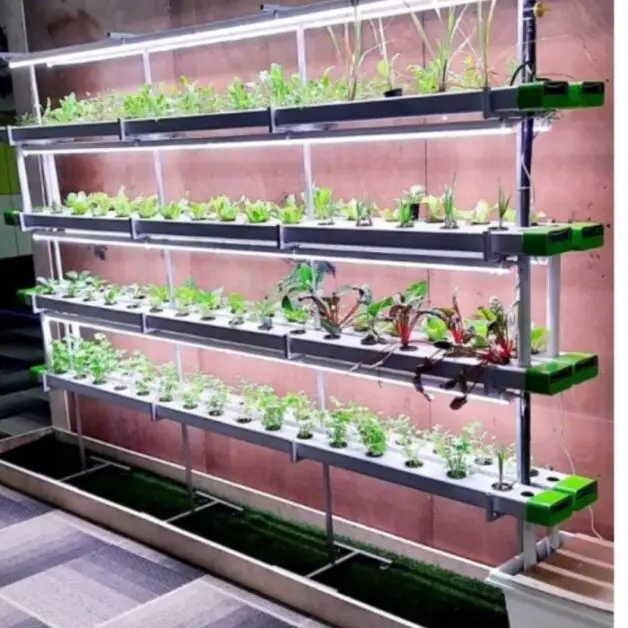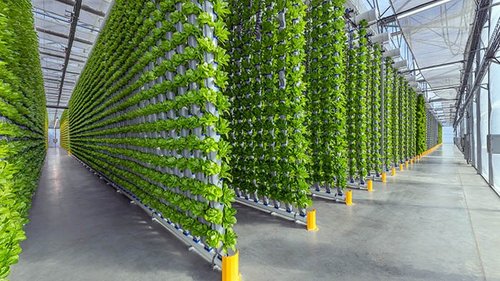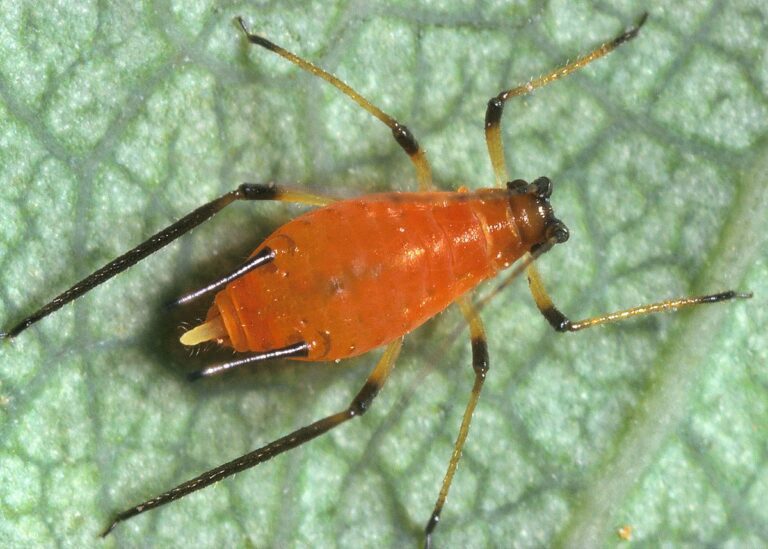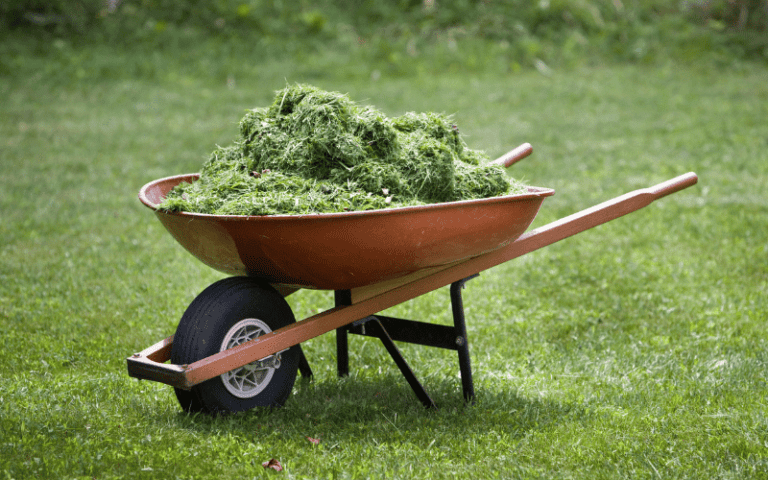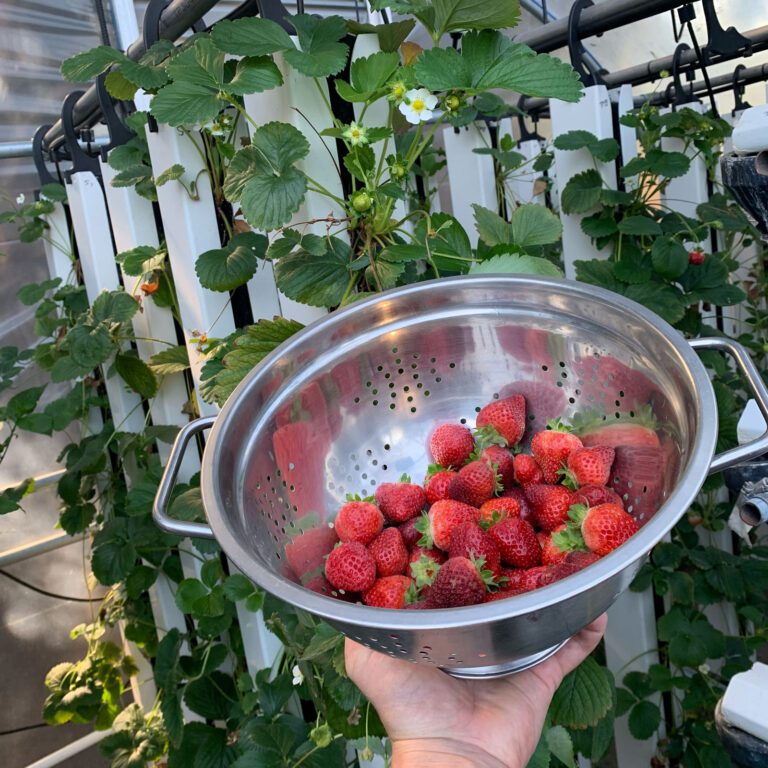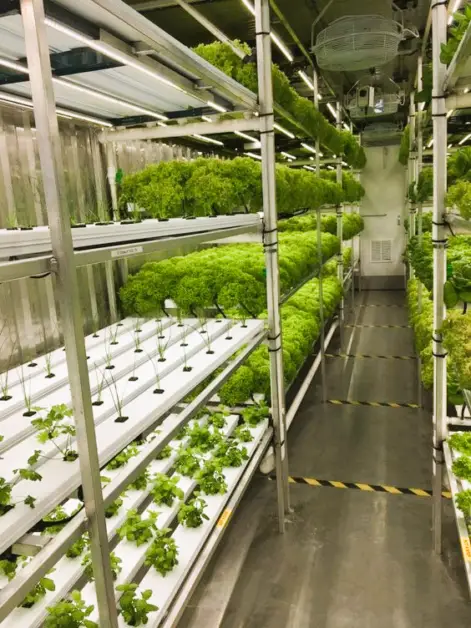Indoor Hydroponics: The Best Plants to Grow in Water
Did you know you can grow fresh herbs and vegetables indoors without soil? Welcome to the fascinating world of indoor hydroponics! Imagine harvesting crisp lettuce, fragrant basil, and juicy tomatoes right from your kitchen. This method isn’t just for the pros; it’s perfect for beginners too. With hydroponics, plants grow faster and produce more, all while using less water.
In this guide, we’ll explore the best plants to grow in water and how to get started with your indoor garden. Whether you’re aiming to save money on groceries or enjoy fresher produce, indoor hydroponics is a game-changer. Ready to dive in? Let’s get growing!
Table of Contents
Understanding the Benefits of Indoor Hydroponics
Hydroponics, a modern method of growing plants without soil, has gained significant popularity among gardening enthusiasts. Indoor hydroponics, in particular, offers a range of benefits that make it an appealing option for individuals looking to cultivate plants in a controlled environment.
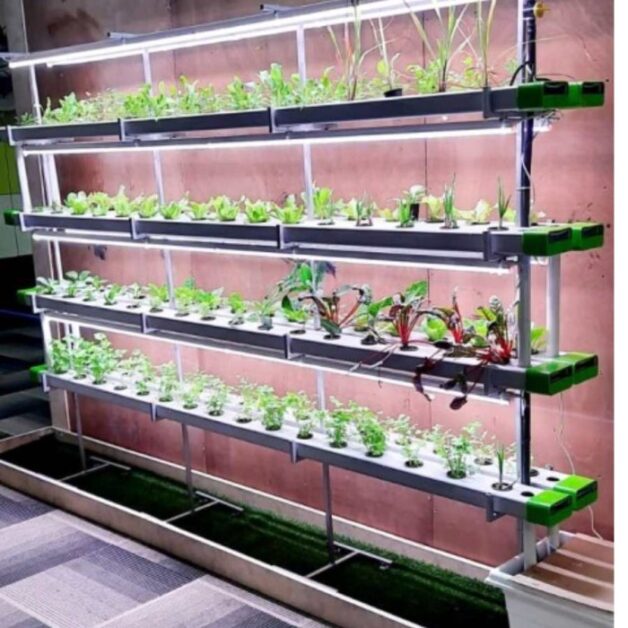
Maximizes Space Utilization
- Vertical Growth: Hydroponics systems allow plants for vertical plant growth, utilizing minimal space.
- Ideal for Urban Dwellers: Perfect for individuals with limited outdoor areas or living in urban settings.
Eliminates Traditional Gardening Hassles
- No Soil Needed: Removes the requirement for soil, shovels, hoes, and other traditional gardening tools.
- Reduced Weeding and Pest Control: Minimizes the hassle of weeding and dealing with soil-borne pests and diseases.
Enhanced Plant Health and Productivity
- Healthier Crops: Lower risk of soil-borne diseases and pests leads to healthier plants.
- Optimal Growth Conditions: Precise control over nutrient and pH levels ensures optimal plant growth and higher yields.
Sustainable and Controlled Gardening
- Innovative Method: Provides a fascinating and sustainable solution for controlled plant cultivation.
- Higher Yields: Results in more productive crops compared to traditional gardening methods.
In the following sections, we will delve deeper into the benefits of growing plants in water-based systems. We will also provide practical guidance on selecting the right indoor hydroponic system and setting up your own indoor garden.So let’s dive into the world of indoor hydroponics and discover its incredible potential for plant growth.
Exploring the Advantages of Growing Plants in Water
Growing plants in water, also known as hydroponics, offers numerous advantages for gardening enthusiasts.
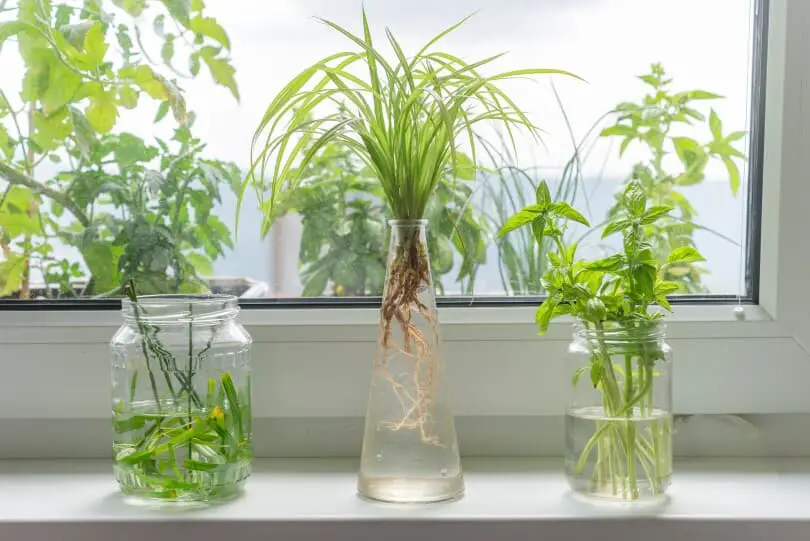
Cleaner and Controlled Growing Environment
- Elimination of Soil: Reduces the risk of pests and diseases that thrive in soil.
- Minimized Contamination: Provides a cleaner and more controlled growing environment for plant growth.
Efficient Use of Resources
- Water Conservation: Recirculate water, significantly reducing water consumption compared to soil-based gardening.
- Reduced Fertilizer Need: Nutrients are supplied directly to plant roots, minimizing fertilizer use.
Year-Round Cultivation
- Indoor Setup: Allows for growing plants year-round, regardless of outdoor weather conditions.
Faster Growth and Higher Yields
- Optimized Growth Conditions: Direct access to water, oxygen, and nutrients accelerates plant growth.
- Enhanced Productivity: Careful nutrients management leads to healthier, more productive crops.
Exploring the advantages of growing plants in water reveals the potential for increased sustainability, improved plant health, and higher yields. As more gardeners recognize these benefits, hydroponics is becoming increasingly popular for both commercial growers and home gardeners alike. By harnessing the power of water and modern cultivation techniques, hydroponics offers exciting possibilities for the future of gardening.
Review of Indoor Hydroponic Garden Guide & Cookbook
The Indoor Hydroponic Garden Guide & Cookbook offers a comprehensive resource for anyone interested in indoor hydroponic gardening. It provides detailed instructions for setting up and maintaining hydroponic systems, making it suitable for beginners. I found the integration of recipes tailored for hydroponically grown produce to be particularly helpful, as it offers practical ways to utilize the harvest.
The book covers a wide range of topics, including different hydroponic systems, plant types, and growing techniques, making it suitable for various preferences and skill levels. Additionally, the inclusion of tips and tricks adds value by offering insights for optimizing plant growth and yields.
However, it’s worth noting that the book may have some limitations. It may not cover advanced hydroponic techniques or niche topics in depth, and some techniques may require additional equipment not included in the book. Additionally, as with any printed resource, there’s a possibility of outdated information over time.
Overall, the Indoor Hydroponic Garden Guide & Cookbook is a valuable resource for anyone looking to start or improve their indoor hydroponic garden, offering practical guidance and inspiration for successful cultivation.
- Comprehensive Guide: Provides detailed instructions for setting up and maintaining indoor hydroponic gardens.
- Cookbook Integration: Includes recipes tailored for hydroponically grown produce.
- Beginner-Friendly: Suitable for beginners with clear explanations and step-by-step guidance.
- Diverse Content: Covers various hydroponic systems, plant types, and growing techniques.
- Tips and Tricks: Offers valuable tips and tricks for optimizing plant growth and yields.
- Inspiring Ideas: Provides inspiration for creating beautiful and productive indoor gardens.
- Limited Focus: May not cover advanced hydroponic techniques or niche topics in depth.
- Physical Book: Requires physical storage space and may not be as portable as digital resources.
- Additional Equipment: Some techniques may require specific equipment not included in the book.
- Dependent on Author Expertise: Quality of information may vary depending on the author’s expertise.
- Potential for Outdated Information: Information may become outdated as hydroponic technology evolves.
Choosing the Right Indoor Hydroponic System for Your Home
When it comes to choosing the right indoor hydroponic system for your home, there are several factors to consider.

Space Availability
- Small Spaces: Opt for compact systems that fit on tabletops or window sills if space is limited.
- Larger Areas: Consider freestanding or wall-mounted systems for more extensive growing areas.
Plant Type Compatibility
- Leafy Greens and Herbs: Nutrient Film Technique (NFT) systems are ideal.
- Larger Plants: Deep Water Culture (DWC) systems are better suited for plants like tomatoes and cucumbers.
- Matching System to Plants: Ensure the system you choose is designed for the specific types of plants you want to grow.
Experience and Maintenance Level
- Beginner-Friendly Systems: Look for easy-to-set-up systems with minimal maintenance if you’re new to hydroponics or have a busy schedule.
- Hands-On Systems: More experienced growers might prefer systems that require regular monitoring and adjustment.
By considering these factors, you can choose the indoor hydroponic system that best suits your space, plant preferences, and lifestyle. So, take some time to research and explore your options before making a decision. With the right system in place, you’ll be well on your way to enjoying the benefits of hydroponic gardening in the comfort of your own home.
Essential Equipment and Materials for Indoor Hydroponics
As you embark on your indoor hydroponic gardening journey, it is essential to have the right equipment and materials at your disposal. These tools will not only facilitate the growth and maintenance of your plants but also ensure optimal conditions for their development.
Lighting System
- LED grow lights are highly recommended for their energy efficiency and ability to emit specific light wavelengths necessary for plant growth.
- Fluorescent lights are another popular option, providing a more affordable alternative.
- A timer is essential to regulate the duration of light exposure, simulating natural day-night cycles.
Hydroponic System
- A well-designed hydroponic system is crucial, including a reservoir to hold the water and nutrient solution.
- Various types of hydroponic systems exist, such as:
- Nutrient Film Technique (NFT)
- Deep Water Culture (DWC)
- Ebb and Flow (Flood and Drain)
- Choose a system that aligns with your space constraints, desired plant varieties, and level of expertise.
Water Circulation
- A pump is necessary to circulate the water and nutrient solution through the hydroponic system.
- Regular monitoring and adjustments of the pH and nutrient levels in the water are crucial for optimal plant growth.
As you gather your equipment and materials, keep in mind that investing in quality products will yield better results and ensure longevity. By equipping yourself with the essentials, you are laying the foundation for a successful and thriving indoor hydroponic garden.
Step-by-Step Guide to Setting up Your Indoor Hydroponic Garden
Setting up your indoor hydroponic garden requires careful planning and preparation. Here is a step-by-step guide to help you get started on this exciting gardening journey.
1. Choose the right location: Find a suitable area in your home with access to natural light or where you can install grow lights. Ensure the space is well-ventilated to maintain the ideal temperature and humidity levels for your plants.
2. Select your hydroponic system: There are various types of indoor hydroponic systems available, such as nutrient film technique (NFT), deep water culture (DWC), and aeroponics. Consider factors like space availability, budget, and your level of expertise before deciding on the system that suits your needs.
3. Gather the necessary equipment and materials: Depending on the chosen hydroponic system, you will need items like grow trays, reservoirs, pumps, air stones, pH meters, nutrients, and growing mediums. Research the specific requirements for your selected system and ensure you have all the essentials before proceeding.
4. Set up the infrastructure: Install the hydroponic system following the manufacturer’s instructions. This typically involves assembling the components, connecting pipes, setting up pumps, and ensuring the appropriate water flow. Take your time to carefully assemble and position each element to ensure optimal functionality.
5. Test and adjust the nutrient solution: Prepare the nutrient solution according to the specific requirements of your plants. Use a pH meter to monitor and adjust the pH level of the solution as needed. It is crucial to maintain the correct pH range to ensure nutrient availability and prevent nutrient deficiencies or toxicities in your plants.
6. Plant your chosen crops: Select plants that thrive in hydroponic environments and adjust well to the available light conditions. Follow the recommended spacing and planting guidelines provided by the seed supplier. Ensure that plants are properly supported and securely placed within the growing medium or system.
By following these steps, you can successfully set up your indoor hydroponic garden. Remember to conduct regular maintenance tasks, such as checking and adjusting nutrient levels, monitoring plant growth, and addressing any issues that may arise. With time and practice, you will develop the skills and expertise to enjoy the benefits of year-round, efficient plant cultivation in the comfort of your own home.
I recently started an indoor hydroponic garden, and the VIVOSUN pH Meter has been an essential tool in ensuring the health and vitality of my plants.
One of the most crucial aspects of hydroponic gardening is maintaining the correct pH level of the nutrient solution, and this pH meter has made the process incredibly straightforward. Its accurate readings have allowed me to adjust the pH levels precisely to meet the specific needs of my plants, resulting in healthier growth and better yields.
The meter’s user-friendly design and clear digital display make it easy to use, even for someone like me who is relatively new to hydroponic gardening. Its compact size also makes it convenient to carry around and use wherever needed in my indoor setup.
While I’ve found the need for occasional calibration, it’s a small price to pay for the reliability and accuracy this pH meter provides. Overall, I highly recommend the VIVOSUN pH Meter to anyone looking to maintain optimal growing conditions in their indoor hydroponic garden. It’s been a game-changer for me, ensuring my plants thrive and flourish.
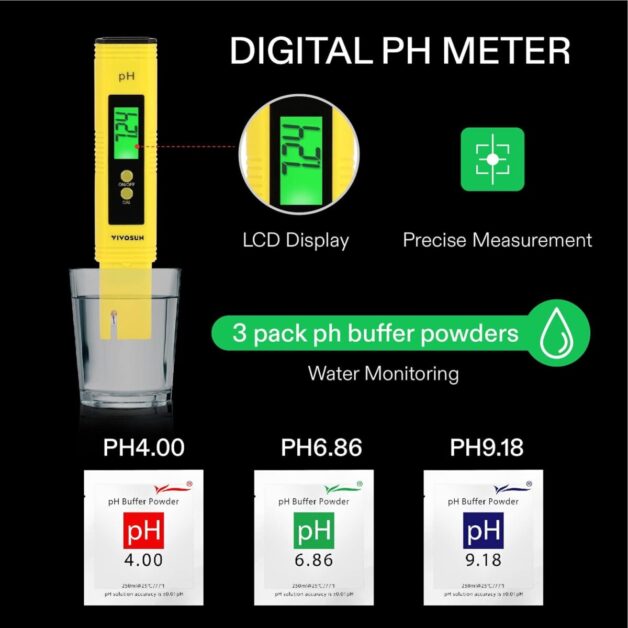
✔ Easy to Use: Simple operation with clear digital display, suitable for both beginners and experienced users.
✔ Wide Application: Suitable for various water sources, including hydroponic systems, aquariums, and pools.
✔ Pocket-Sized: Compact and portable design for convenient use anywhere.
✔ Long Battery Life: Extended battery life ensures reliable performance over time.
✔ Affordable: Offers good value for money compared to other pH meters on the market.
❌ Fragile Electrode: The electrode may be delicate and require careful handling to prevent damage.
❌ Limited Durability: May not withstand rough handling or exposure to harsh environments.
❌ Single Function: Designed specifically for pH measurement and does not offer additional features.
❌ Temperature Sensitivity: pH readings may be affected by temperature variations in the water.
❌ Not Waterproof: Not suitable for immersion in water and requires cautious usage near liquids.
Selecting the Ideal Plants for Water-based Hydroponic Cultivation
Selecting the ideal plants for water-based hydroponic cultivation is a crucial step in ensuring a successful indoor gardening experience. When it comes to hydroponics, certain plants thrive better in a water-based environment compared to traditional soil-based cultivation. By carefully choosing the right plants, you can maximize your yields and achieve beautiful, healthy crops.
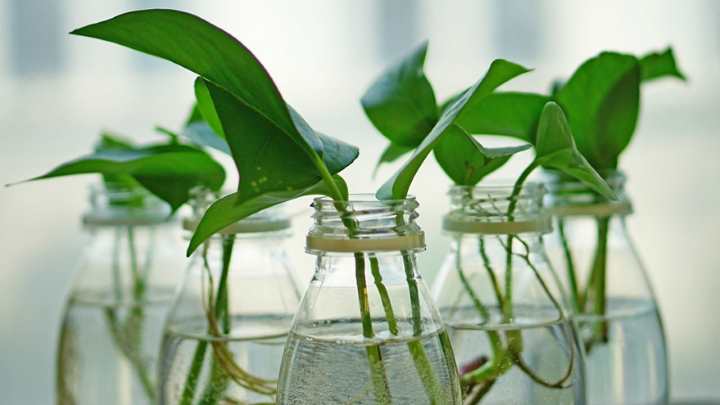
Water Preference
- Plants with a natural affinity for water, such as:
- Lettuce
- Herbs like basil and mint
- Leafy greens like kale and spinach
- These plants have evolved to absorb nutrients efficiently from water, making them well-suited for hydroponics.
Growth Habits and Space Requirements
- Consider the growth habits and space requirements of each plant:
- Plants with sprawling growth, such as:
- Tomatoes
- Cucumbers
- Require more vertical space.
- Compact plants, such as:
- Strawberries
- Herbs
- Can thrive in smaller spaces, making them great options for indoor hydroponic gardens.
Other Factors
- Nutrient Requirements: Different plants have unique nutrient needs, which should align with your hydroponic system’s capabilities.
- Root Structure: Plants with compact, fibrous root systems tend to do well in hydroponic environments, while plants with taproot systems may not adapt as easily.
- Growth Rate: Fast-growing plants can provide quick results and are ideal for beginners, while more challenging crops like broccoli may require more experience.
By carefully selecting plants that have a preference for water as a growing medium and considering their growth habits and space requirements, you can ensure a successful water-based hydroponic garden. In the next section, we will explore the nutrient requirements of plants in hydroponic systems, which plays a vital role in their growth and overall health.
Exploring the Nutrient Requirements of Plants in Hydroponic Systems
In order to achieve optimal growth and yield, plants in hydroponic systems have specific nutrient requirements that must be met. Unlike traditional soil-based gardening, where plants obtain their nutrients from the soil, hydroponics relies on nutrient solutions to deliver essential elements directly to the plants’ root systems.
Primary Macronutrients (NPK)
- Nitrogen (N): Crucial for leaf development and overall plant growth.
- Phosphorus (P): Essential for root growth, flowering, and fruit production.
- Potassium (K): Important for overall plant health and disease resistance.
Secondary Macronutrients
- Calcium (Ca): Supports cell wall structure and stability.
- Magnesium (Mg): Vital for chlorophyll production and photosynthesis.
- Sulfur (S): Integral for protein synthesis and enzyme function.
Micronutrients
- Iron (Fe): Necessary for chlorophyll synthesis and enzyme function.
- Manganese (Mn): Involved in photosynthesis, respiration, and nitrogen assimilation.
- Copper (Cu): Plays a role in photosynthesis and metabolism.
- Zinc (Zn): Important for growth regulation and enzyme function.
- Boron (B): Essential for cell wall formation and reproductive growth.
- Molybdenum (Mo): Crucial for nitrogen fixation and enzyme activity.
- Chloride (Cl): Helps with osmosis and ionic balance in cells.
Monitoring and Adjusting Nutrient Solutions
- pH Levels: Ensure optimal nutrient uptake by maintaining appropriate pH levels.
- Electrical Conductivity (EC): Measures the total dissolved nutrients in the solution.
- Parts Per Million (PPM): Indicates the concentration of specific nutrients.
Methods for Nutrient Management
- Commercial Nutrient Solutions: Pre-mixed solutions designed for hydroponics.
- Custom Nutrient Solutions: Formulate specific mixes to meet the unique needs of different plants.
Please note that the information provided is a general overview of the nutrient requirements in hydroponic systems. It is recommended to consult specific crop guidelines and scientific literature to determine the precise nutrient requirements for different plant species. In the following sections, we will explore specific plant preferences and the methodology for meeting nutrient demands in various hydroponic systems.
Maintaining Optimal pH Levels in Your Indoor Hydroponic Garden
Maintaining optimal pH levels is crucial for the success of your indoor hydroponic garden. The pH level refers to the acidity or alkalinity of the nutrient solution in which your plants grow. It plays a vital role in nutrient availability and uptake, as well as the overall health and productivity of your plants.
Ideal pH Range
- The ideal pH range for most hydroponic plants is between 5.5 and 6.5.
- This slightly acidic range ensures that essential minerals are readily absorbed by the plants, promoting healthy growth and development.
Testing pH Levels
- Regularly test your nutrient solution using a pH meter or test kit to accurately measure the acidity or alkalinity.
- Perform tests after mixing nutrients, topping off the reservoir, and on a weekly basis to monitor fluctuations.
Adjusting pH Levels
- If the pH level is too high (alkaline), lower it by adding a pH down solution, such as phosphoric acid.
- If the pH level is too low (acidic), raise it by adding a pH up solution, such as potassium hydroxide.
- Make small adjustments gradually to avoid sudden fluctuations in pH levels, which can be stressful for plants.
By maintaining optimal pH levels through regular testing and precise adjustments, you can ensure that your hydroponic plants receive the necessary nutrients for healthy growth and development.
Managing Lighting and Temperature for Successful Water-based Plant Growth
When it comes to indoor hydroponics, managing lighting and temperature are key factors for successful water-based plant growth. Proper lighting ensures that plants receive the right amount and quality of light, while temperature control helps create an optimal environment for their growth.
:max_bytes(150000):strip_icc()/propagate-lucky-bamboo-1902933-04-1b84b5c582fb46b6a188e8159e49cd3d.jpg)
Photosynthesis: Lighting plays a crucial role in photosynthesis, the process by which plants convert light into energy.
Varying Light Requirements: Different plants have varying light requirements, so it’s essential to provide them with the right kind of light and duration.
LED Grow lights: LED grow lights are often recommended for indoor hydroponics due to their energy efficiency and adjustable spectrum.
Mimicking Natural Sunlight: By mimicking natural sunlight, LED grow lights promote healthy plant growth and development.
Proper Distance: It’s essential to position the lights at an appropriate distance from the plants to ensure optimal light absorption without causing any damage.
Temperature Range: Most plants thrive in temperatures between 65 and 75°F (18 to 24°C).
Specific Temperature Needs: It’s crucial to research the specific temperature needs of the plants you’re growing.
Consistent Temperature: Maintaining a consistent temperature is key to preventing stress and ensuring proper nutrient uptake.
Temperature Regulation: Using a thermostat-controlled system or incorporating fans or ventilation can help regulate the temperature.
Water Temperature: It’s also essential to monitor the water temperature, as excessively high or low temperatures can hinder plant growth and lead to nutrient imbalances.
By carefully managing lighting and temperature, you can create an optimal environment for water-based plant growth in your indoor hydroponic garden. Providing the right lighting conditions and maintaining appropriate temperatures will help your plants thrive and yield healthy and bountiful harvests.
Preventing and Managing Common Pests and Diseases in Indoor Hydroponics
Preventing and managing pests and diseases in an indoor hydroponic garden is crucial for maintaining healthy and thriving plants. While hydroponic systems create a controlled environment that minimizes the risk of pests and diseases, it is still important to take proactive measures to prevent any potential issues.

Regular Sanitation: Frequently clean grow trays, reservoirs, and tools.
Eliminate Contamination Sources: Maintain cleanliness to reduce the risk of pests entering the system.
Balanced Nutrient Solutions: Provide well-balanced nutrients to enhance plant defenses.
Monitor Nutrient Levels: Regularly check and adjust nutrient levels to ensure plants receive essential elements.
By following these preventative measures, you can greatly reduce the risk of pests and diseases in your indoor hydroponic garden. However, should an issue arise, it is important to address it promptly and effectively to prevent further damage. Stay tuned for the next section, where we will explore various methods for managing common pests and diseases in indoor hydroponics.
Harvesting and Enjoying the Fruits of Your Indoor Hydroponic Garden
With your indoor hydroponic garden flourishing, it’s now time to reap the rewards of your hard work and enjoy the fruits of your labor.

Year-Round Freshness
- Continuous Harvest: Enjoy fresh produce even during colder months when outdoor gardening is limited.
harvesting Guidelines
- Timing is Key: Pay attention to each plant’s optimal harvesting window for peak flavor and texture.
- Leafy Greens: Start by harvesting outer leaves, allowing younger ones to continue growing.
- Herbs: Harvest stems and leaves before flowering for intense flavors.
- Fruits and Vegetables: Wait until fully ripened on the vine for best taste and texture.
Savory Satisfaction
- Enjoying Homegrown Bounty: Savor the full flavor and nutritional benefits of your freshly harvested produce.
- Individual Harvesting: Take your time to pick each plant at its prime for maximum enjoyment.
With these guidelines, you can navigate the harvesting process with ease and relish in the delightful flavors of your indoor hydroponic garden’s bounty all year round.
Troubleshooting Tips and Solutions for Indoor Hydroponic Gardening Challenges
When it comes to indoor hydroponic gardening, challenges can arise that require troubleshooting and solutions.
Managing nutrient deficiencies in Hydroponics
- Regular Testing: Regularly test and maintain nutrient levels in the water solution to prevent deficiencies and promote healthy plant growth.
- Quality pH and EC Meters: Invest in a quality pH meter and an EC meter to monitor pH and nutrient concentration.
- Adjusting Nutrient Solution: Adjust the nutrient solution accordingly can help to prevent deficiencies and promote healthy plant.
Managing Pests and Diseases in Hydroponics
- Proper Sealing: Ensure that your indoor garden is properly sealed and there are no entry points for insects to prevent pests.
- Regular Inspection: Regularly inspect plants for signs of infestation, such as holes in leaves or sticky residue, and take immediate action if needed.
- Biological Control: Implement biological control methods, such as introducing beneficial insects like ladybugs or using organic pest control products, to keep pests at bay.
- Clean and Ventilated Garden Space: Maintain a clean and well-ventilated garden space to reduce the risk of disease outbreaks.
- Prompt Isolation and Treatment: If a plant does become infected, promptly isolate it and take appropriate measures, such as applying fungicides or removing and destroying the affected parts.
By following these practices, indoor hydroponic gardeners can effectively manage nutrient deficiencies and pests and diseases, ensuring a healthy and thriving hydroponic garden.
Learn more about it in the given video:
FAQ
How often should I change the nutrient solution in my indoor hydroponic system?
It is recommended to change the nutrient solution every 2-3 weeks to ensure optimal plant growth and prevent nutrient imbalances.
Can I use tap water for my indoor hydroponic system?
It is generally not recommended to use tap water directly in hydroponic systems due to potential contaminants and high mineral content. It is best to use filtered or distilled water to avoid any issues.
How do I prevent algae growth in my indoor hydroponic system?
To prevent algae growth, you can cover the reservoir to block out light, use opaque containers, or add an algae inhibitor to the nutrient solution. Maintaining proper light levels for plants can also help prevent algae growth.
How do I avoid root rot in my indoor hydroponic garden?
To avoid root rot, ensure proper oxygenation of the root zone by using an air stone or air pump to provide adequate oxygen to the roots. Avoid overwatering and ensure good drainage in your system.
Can I grow all types of plants using indoor hydroponics?
Most plants can be grown hydroponically, but some plants may require specific conditions or systems. It is important to research the specific requirements of the plants you wish to grow before starting your indoor hydroponic garden.
How do I adjust the pH level in my indoor hydroponic system?
To adjust the pH level, you can use pH up or pH down solutions that are specifically designed for hydroponic systems. Follow the instructions provided and regularly monitor the pH level to maintain optimal conditions for plant growth.
What is the ideal temperature range for indoor hydroponic gardening?
The ideal temperature range for most plants in hydroponic systems is between 65-75°F (18-24°C). It is important to maintain a consistent temperature within this range to promote healthy plant growth.
How Can I Prevent Common Pests And Diseases In My Indoor Hydroponic Garden?
To prevent pests and diseases, maintain a clean and sterile environment, regularly inspect your plants for any signs of infestation or disease, and promptly remove any affected plants. Using organic pest control methods, such as neem oil or beneficial insects, can also help prevent pest problems.
Can I reuse the growing medium in my indoor hydroponic system?
It is generally recommended to replace the growing medium between crops to prevent the buildup of salts and potential disease issues. However, some growing media, such as inert substrates like clay pellets, can be reused after proper sterilization.
How long does it take to see results in an indoor hydroponic garden?
The time it takes to see results in an indoor hydroponic garden can vary depending on the plants being grown and their growth rate. Generally, you can expect to see visible growth within a few weeks, but full maturity and harvest may take several months.

Studied Agricultural Engineering-Plant Protection at University of California, Davis.
Head of Content writing team at Southelmontehydroponics.com

